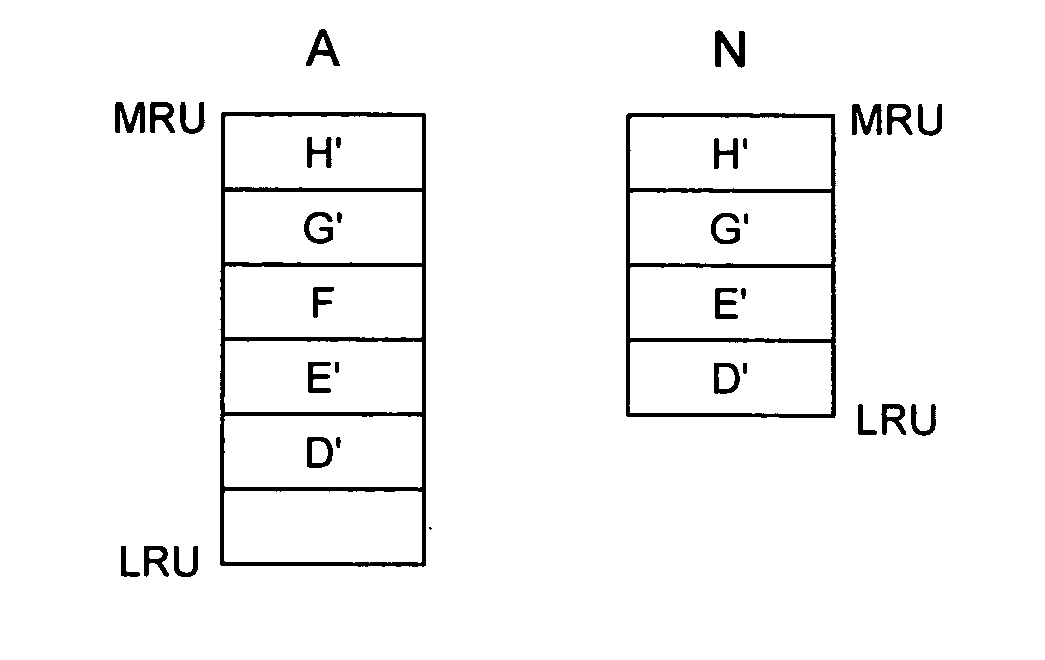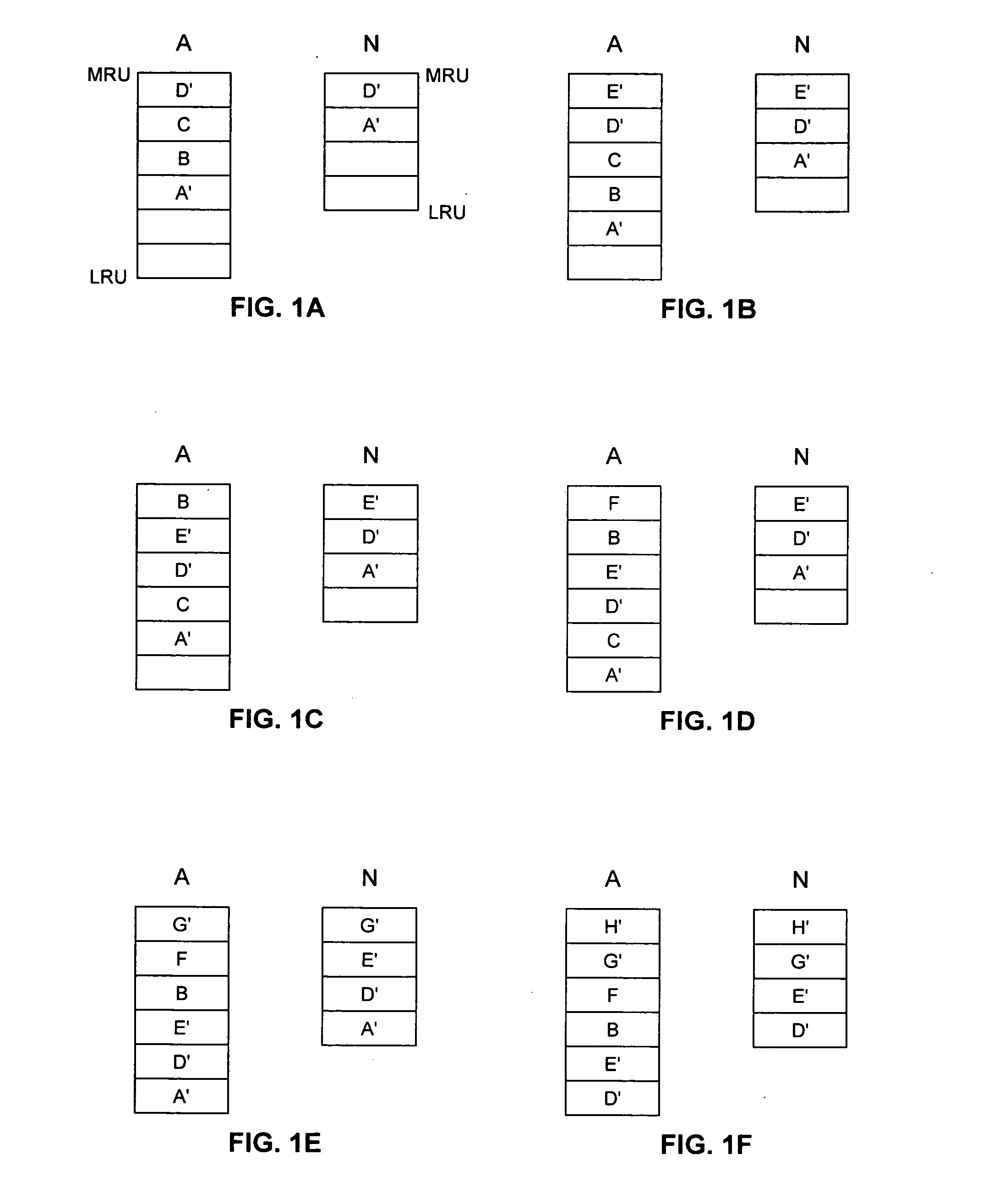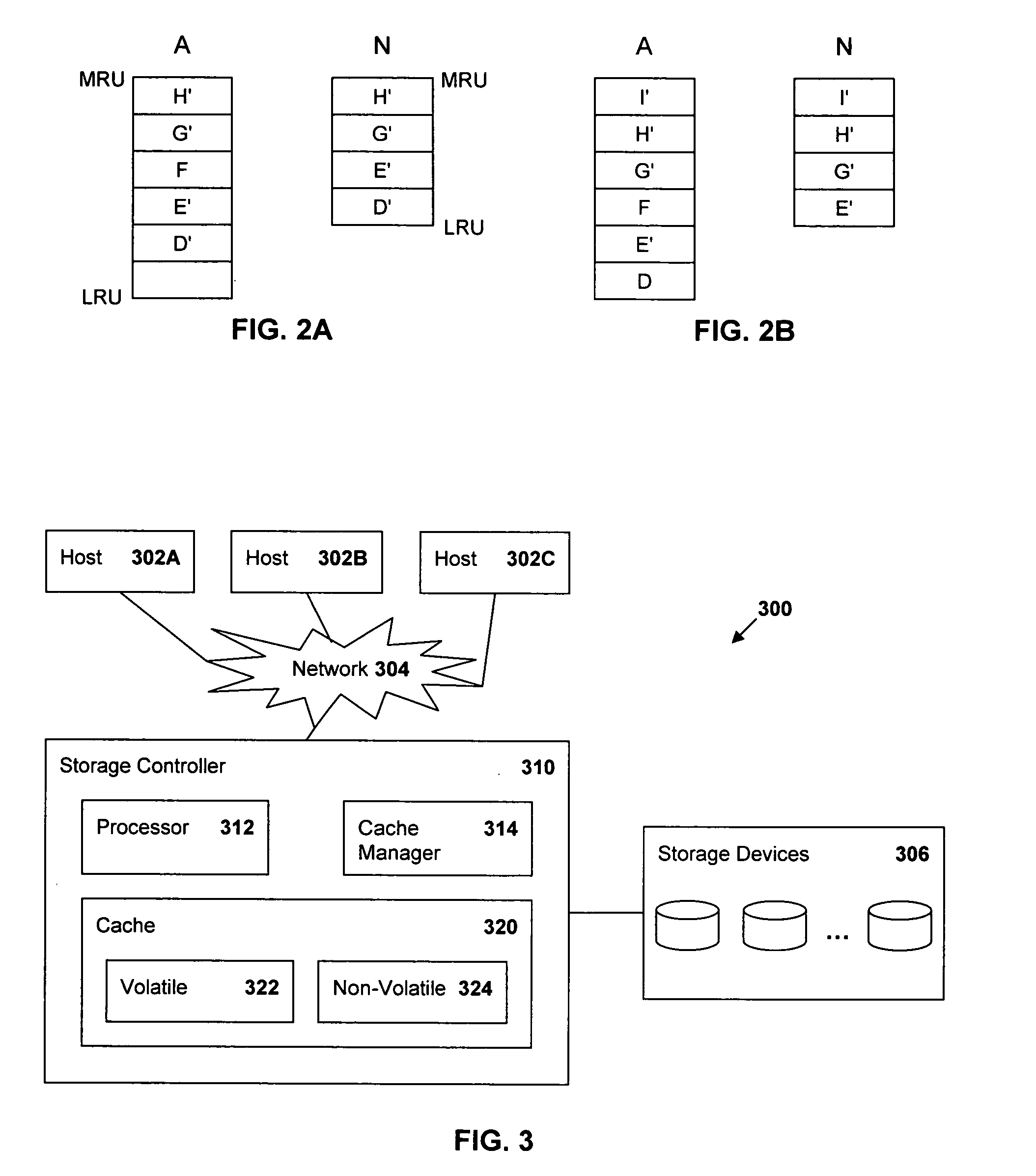Decoupling storage controller cache read replacement from write retirement
a storage controller and read replacement technology, applied in the field of data storage controllers, can solve the problems of reducing the size of the secondary cache, unable to free up space quickly, and unable to modify the modified track,
- Summary
- Abstract
- Description
- Claims
- Application Information
AI Technical Summary
Benefits of technology
Problems solved by technology
Method used
Image
Examples
Embodiment Construction
[0017]FIG. 3 is a block diagram of a data processing environment 300 in which the present invention may be implemented. A storage controller 310 receives input / output (I / O) requests from one or more hosts 302A, 302B, 302C to which the storage controller 310 is attached through a network 304. The I / O requests are directed to tracks in a storage system 306 having disk drives in any of several configurations, such as a Direct Access Storage Device (DASD), a Redundant Array of Independent Disks (RAID Array), Just A Bunch of Disks (JBOD), etc. The storage controller 310 includes a processor 312, a cache manager 314 and a cache 320. The cache manager 314 may comprise either a hardware component or a software / firmware component executed by the processor 312 to manage the cache 320. The cache 320 comprises a first portion and a second portion. In one embodiment, the first cache portion is a volatile storage 322 and the second cache portion is non-volatile storage (NVS) 324. The cache manage...
PUM
 Login to View More
Login to View More Abstract
Description
Claims
Application Information
 Login to View More
Login to View More - R&D
- Intellectual Property
- Life Sciences
- Materials
- Tech Scout
- Unparalleled Data Quality
- Higher Quality Content
- 60% Fewer Hallucinations
Browse by: Latest US Patents, China's latest patents, Technical Efficacy Thesaurus, Application Domain, Technology Topic, Popular Technical Reports.
© 2025 PatSnap. All rights reserved.Legal|Privacy policy|Modern Slavery Act Transparency Statement|Sitemap|About US| Contact US: help@patsnap.com



